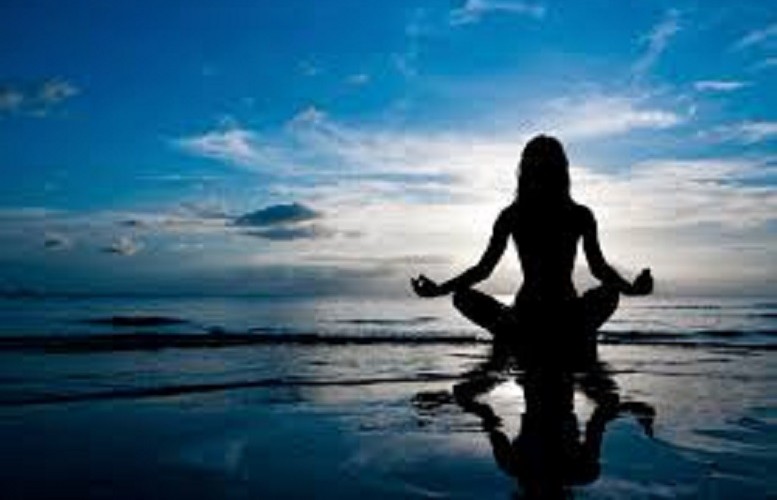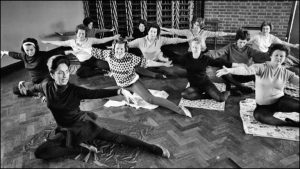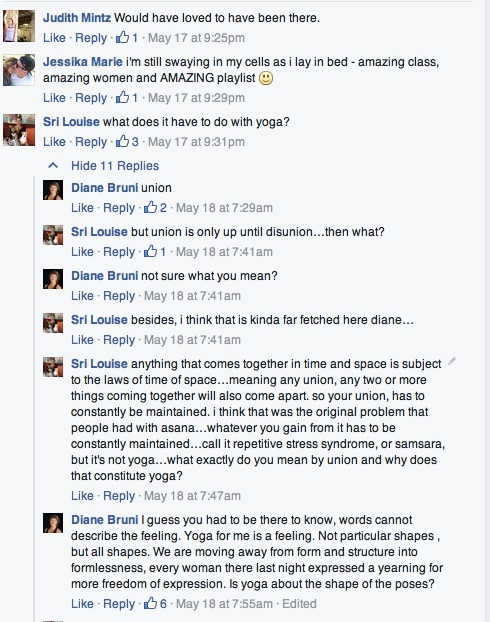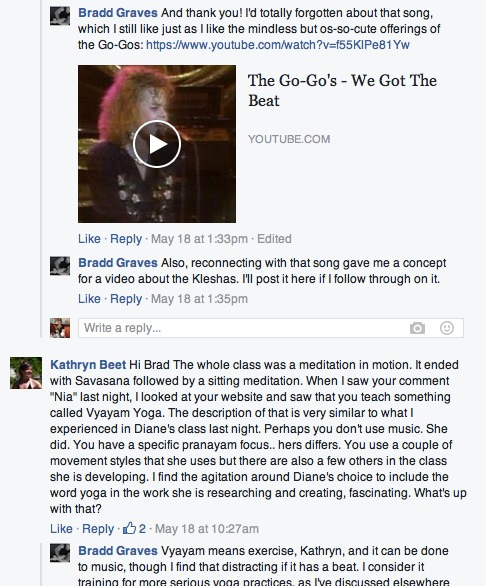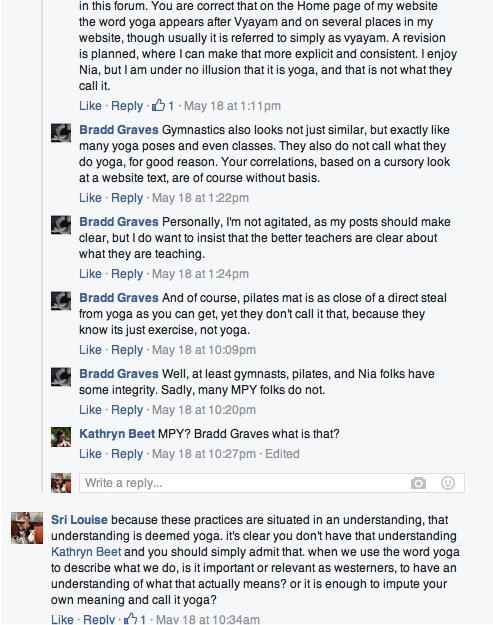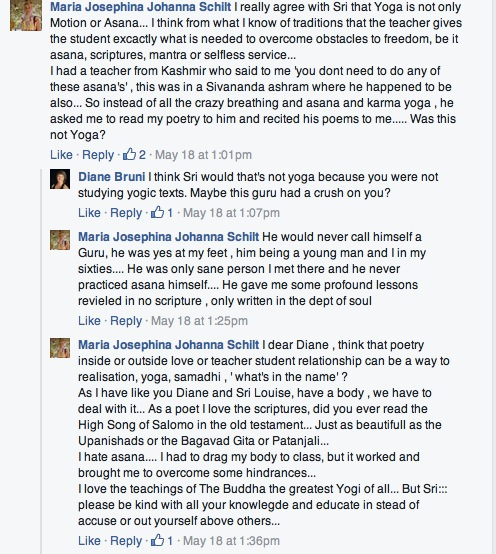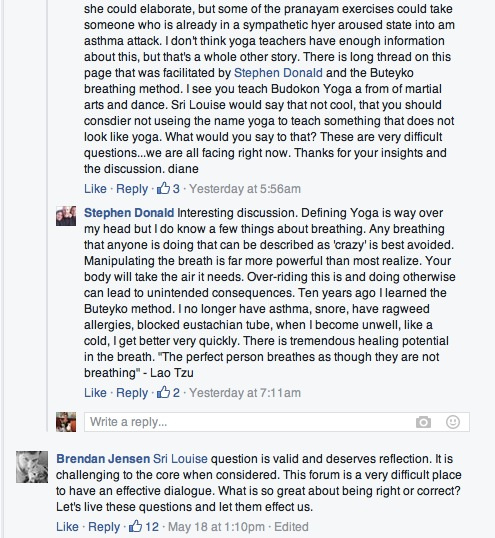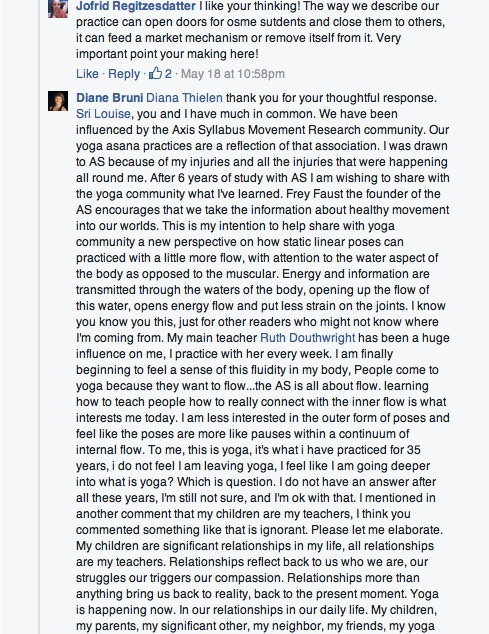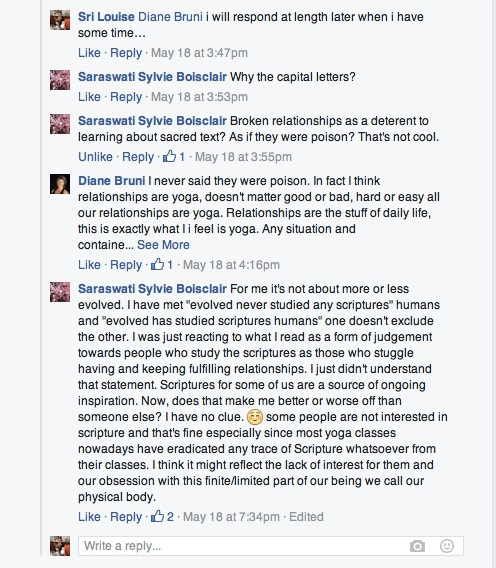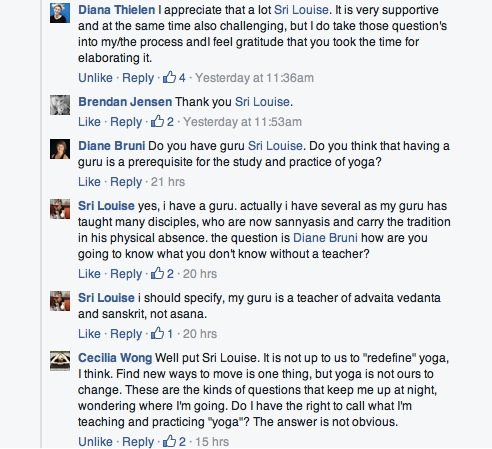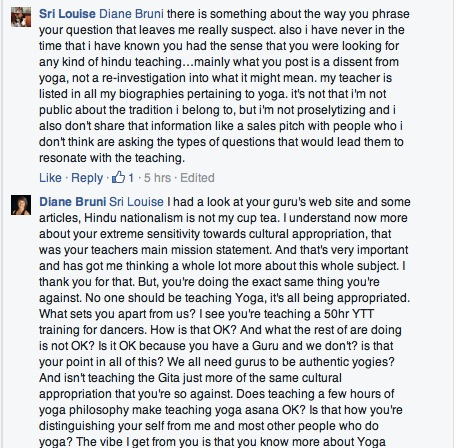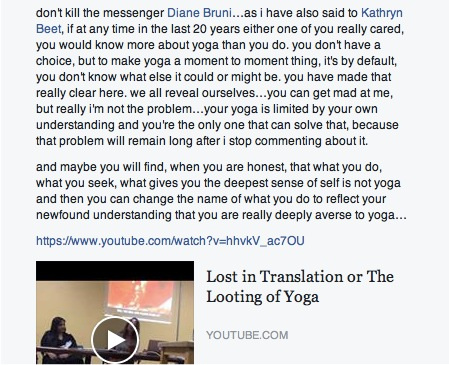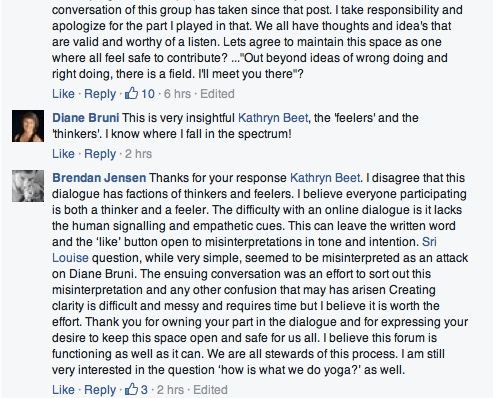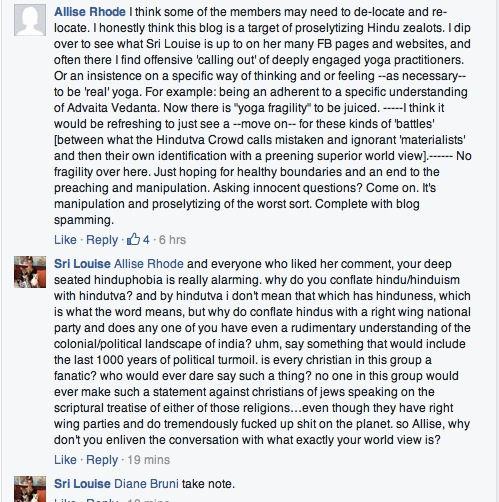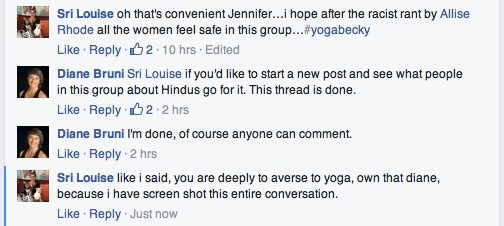“Admiration of a foreign culture or a foreign aesthetic system can connote broad-mindedness and at the same time flatter the aesthetic or political pretensions of the connoisseur. The regard for difference can also become another way to control what has been determined to fall into the category marked “foreign:” certainly this can be it’s effect on the ground, especially when people are stripped of their art and ceremonial objects so that Western admirers can look at them conveniently located in Museums.
In this way appreciation a la Gautier becomes no more than another manifestation of the colonial mentality. It can operate as an alibi for various forms of colonial encroachment and can serve as an attempt to domesticate and bring under control difference not only with respect to bodies but also in terms of aesthetic codes and conventions. More important, it can presuppose the right to decide what is valuable and interesting. What this comes down to is the assumption that the colonist possesses the master code within which all data, all people and customs, all art objects, can be assimilated and judged.
In this way of thinking it is the colonist – or the museum expert, the anthropologist, the judge at the land claims court – who will decide what is authentic and, by extension, what is worth paying attention to, saving, or stealing. The world exists as a warehouse of treasure, with the plunder of choice this time more aesthetic than explicitly material. The aestheticized appreciation of difference can elide the extent to which the possibility of this appreciation continues to be based on ugly and unequal power relations. It still comes down to a question of who takes and who gives.”
Cannibal Culture – Art, Appropriation, & the Commodification of Difference
by Deborah Root
Introduction
I recently found myself at the center of a What Makes This Yoga conversation in a Facebook group for “Yoga and Movement enthusiasts.” This was not the first time as a white woman I have been singled out by other white women and socially isolated for calling out racism in the group, but the ever increasing white fragility of Yoga people in the US and Canada made this conversation particularly interesting as a cultural case study. The thread was deleted by Diane Bruni, the admin of the group and later dismissed by her as, “Good entertainment, but that’s about it.”
A conversation, which took place over two days, with multiple participants on the topic of cultural appropriation in Yoga is deleted because its worth, for the community, is only in its entertainment factor? I would have kept it simply for its entertainment value, but more importantly as a record of how whites in Yoga approach, define, and obscure the identity and meaning of Yoga from its own standpoint and how hostile they become when confronted with this issue.
White women feel totally entitled to speak on Yoga’s behalf even when they themselves admit to never having studied any of the texts that govern Yoga, describe the methods for self-realization, it’s ontological significance and the cultural relevance of Yoga within Hinduism or Sanatana Dharma.
Diane Bruni started the group as a way to dissent from Yoga. An Indian in the group asked why dissent was part of the description. Diane uses the word Yoga to mean Asana. She opened the first Asthanga Yoga studio in Toronto and after many years of repetitive practice suffered an extreme injury, tearing a gluteal muscle from the bone. This injury, as well as other health issues, led her to investigate many different modes of moving and healing. Her process is now to bring that information back into the field of Yoga. The Yoga and Movement Research community shares information about a host of body related topics. All are based upon Western science.
I am also a dancer and like Diane, am inspired by Axis Syllabus. My asana practice has always been influenced by movement ideas found in dance and somatic practices such as Alexander Technique, Feldenkrais, Body Mind Centering and Trager. I am not part of an institutionalized style of Asana and therefor, have always enjoyed the freedom to design my own practice and to include other movement modality concepts, some which I integrate into my Asana practice and others that I do not.
In recent years there has been a lot of dialogue in the Yoga community about Asana and Asana related injuries. I am not opposed to these conversations and think in a culture that has made Yoga synonymous with Asana and turned Asana into the workout method of the new millennium, obviously these conversations are increasingly critical, not just to our understanding of functional movement, but also to our understanding of the danger of cultural appropriation and the psycho/physical ramifications of mis-appropriation. Additionally, I’m concerned that many of these conversations fixate on the body and do not situate Asana in the larger framework of Yoga and when pressed, are actually deeply antagonistic to Yoga and especially to Hinduism.
Hatha Yoga is based in Eastern science. What happens when the West digests this practice and re-imagines it from its own scientific or fitness perspective. Does it promote a Western bias? Does it replay the colonial trope of everything that has value is Western in nature? That anything that is Eastern, i.e. Hindu, needs to be “fixed” or “evolved” out of its backwardness by the colonial class?
There is so much to unpack in Diane’s description of the group, which is pictured below, especially when you experience the low level tolerance of Yoga politics by Diane and others in the group. (Note: the new rules that govern this group do not allow for politics of any kind to be posted, Because I assume I’m Going To Retain All My Privileges Forever.)
When Diane asks, what is Yoga, she is asking what is Asana from an anatomical perspective. She is not trying to restore Asana or even to understand its role as a conduit for Eastern esoterics. It’s not even a balanced approach. There are no articles about the relationship of Asana to the whole, what is actually Yoga or discussions about how the West has misappropriated Asana to such a degree that practitioners are ripping their muscles from bone. There is little mention of the western psyche, how and what it projects about itself onto Yoga. Instead, the critique centers on Asana completely dislocated from it’s cultural roots, except for when Westerners don’t want to assume responsibility for their own Yoga shitshow and then they love to recognize its Indian roots in terms of Blame-the-Hindu.
White scholars have promoted the idea that Asana as the West knows it, is a modern construction or rather a fabrication of western influences that cannot be attributed to any religious continuity spanning 10,000 years on the Indian Subcontinent. The fallout of this perspective is the wide spread isolation of Asana from the theories and religious culture that govern it.
This has allowed the rise of Christian Yoga, faux teachers like Matthew Remski to teach Hindu sacred texts such as the Bhagavad Gita, even though his writings, especially with regards to the Gita are routinely anti-Hindu and Diane to start a group for “Discussion or questions related to Yoga Asana and other movement based modalities and their related fields. Examples include: Axis Syllabus, Pilates, weight and cross-training, calisthenics/ bodyweight exercise, anatomy, physiology, kinesiology, biomechanics and injury prevention,” which situates asana among fitness/therapy pursuits as if it is a one dimensional corporeal practice belonging to western science.
Yoga is an unbroken tradition, which means it has been in existence and carefully cultivated in India since time immemorial. Diane Bruni has no connection to that tradition and is deeply inimical towards it as her posts at the end of this conversation reveal. I’m not sure what she means “if you believe Yoga is a living tradition”…or why she thinks Westerners are in a position to carry a tradition they have no relationship to forward?
When Diane asks if you think Yoga is living, she asks this not to embrace Yoga’s historical identity or it’s ancestral relevance, which are all part of the existence/tradition of Yoga, rather she is negating any fixed notions of Asana in the West, but linear fixation is part and parcel of western pyshco-cosmology. There is nothing more linear than how we tell time, embodied or otherwise. Any non-linear approach to temporality that the West “stumbles” upon has been in Vedic cultural parlance already for thousands of years, even before Christ. The Vedic or Hindu Dharmic outlook, is inherently inclusive, fluid and cyclical and I’m surprised Diane doesn’t want to include it in her quest for somatic-self understanding.
I have said that I think there are many ways in which the West can contribute to the practice of Yoga, bio-mechanics is one of them, trauma sensitivity is another, but that would mean Western Yoga included an understanding of the nature of reality and these practices were oriented toward that directional goal, then we could say we were fostering a mutual understanding of Yoga. For those who are not interested in using Asana in this way, I suggest they stop calling what they’re doing Yoga. To call what you do Yoga without understanding or even being interested in the cosmology or ontology of Dharmic traditions is not Yoga. It’s that simple.
I even offer up new names like Fitness Asana or Bio-Asana and in your class description you could say, I have extracted Asana from the larger framework of Hinduism, to just focus on the body. I promise to play my singing bowl and every now and then I’ll use my special voice to share a few, feel-good slogans I picked up from the many spiritual paperbacks I have read along the way. P.S. Don’t worry, nothing about this is religious, which is code for saying, relax, I have taken the Hindu out of Yoga.
Now this makes a lot of people in the West really mad as this thread reveals. Many people have spent decades doing downward dog to the count of 5 and feel they have invested a lot in the propagation of Yoga in North America…but as you will see through the comments, Yoga is no where in sight. Instead, new age approaches to body and empowerment have given people a career with a soap-box for how to be spiritual when you have no idea who you are. It’s shocking how little most Western Yoga teachers actually know about Yoga.
Some of the antagonism is their own unacknowledged conflict to their religion of origin, which is often projected onto Hinduism, first positively and then negatively. It’s part of the “individuation” process of westerners in Yoga and the tenacious sense of ownership they derive post-individuation process. What’s happening in the West is not a struggle for Yoga, most people have no idea what Yoga is and really don’t care, it’s a struggle for capital. Think The Secret for spiritual narcissists, who have no analysis of capitalism.
Diane Bruni is very critical of Pattabhi Jois and the Astanga method, but is willing to up-hold Danny Paradise, a white male Astanga teacher, because he lets her off the Yoga hook…by the way, S.L. is code for Sri Louise!
I don’t know, I feel like this is Diane Bruni having a Meryl Streep moment…Understanding the demographics of most Yoga classes, it is safe to assume that Danny’s classes are mostly white women, who probably have a lot of anti-blackness steeped into their whiteness, but suddenly, Kemetic Yoga is white ladies’ Yoga Du Jour.
If you accept the Out of Africa migration theory, and there is a debate over migration dates from Africa to India, 75,000 or 50,000 ago, then we can say, “we” share a genetic history, but especially for those of us who are white, I think we should be careful in our quest to homogenize everything, so that we don’t have to negotiate difference on every other social/economic/geo-political level.
It’s also important to note that migration and what migrating people take them with about their spiritual identity is a totally different dynamic than what we are referring to as cultural appropriation by Euro-Americans…I also think it is safe to say, that what we practice and understand about Yoga is based in an understanding of Self that can be traced to the Rishis and is still extant in Vedic scripture and taught today within a Hindu framework, not as some kind of watered down appropriation, but rather as the fulfillment of complete self-mastery, maintained and passed on for generations through the Guru/Sishya, teacher/student relationship.
Diane’s statement on the roots of Yoga can only be contextualized by reading the entire thread because what it reveals is something more sinister and that is the depths Diane is willing to go to not give Yoga to the Hindus…I don’t know why she and others are so reluctant to give the origins and cultivation of Yoga civilization on the Indian subcontinent to the Hindus…I can only attribute this to Hinduphobia.
It is not without the least bit of irony that while we were having this conversation in the Yoga & Movement Research Community, which is a Canadian based platform, that a formal apology to the Sikhs, Muslims and Hindus of the Komagata Maru, a Japanese steamship carrying 370 Indian emigrants, who were not allowed to disembark in Van Couver, was being pronounced by Prime Minister Trudeau.
The apology was in recognition of the racism at play 100 years ago. “The move was widely acknowledged to be aimed at keeping Indians out of Canada. Then premier of British Columbia, Sir Richard McBride, said at the time, ‘And we always have in mind the necessity of keeping this a white man’s country.‘” It’s not that Hinudphobia is new, it’s just that it has not been articulated in the Yoga community until now.
In other “anti-Indian news,” The Navaho nation recently brought a civil suit against the retailer Urban Outfitters, who launched the “Navaho” hipster panty and the particularly offensive, “Navaho” print, fabric wrapped flask. In court documents, the retail giant said, “The term “Navaho” is a generic term for a style or design, but “Diné [Navaho] tribal member Casey John disagrees with the argument “Navajo” is a generic term. Using Navaho to describe something is further colonizing the word.” Remaking something culturally specific into something generic for mass consumption, is an essential component of the coercive tactics of cultural appropriation for profit.
Rajiv Malhotra’s U-Turn theory is a template for how the culturally specific, becomes universally unspecific, before again becoming specific as the “digested” innovation of a more dominant culture. The U-Turn theory explores the various dynamics in which westerners often “reject” their own culture and religion of origin in order to embrace the East, but eventually find themselves in conflict over how much Indianness can actually be tolerated by the Western psyche and eventually turn around.
The u-turn is marked by a reverse rejection, now of the East, but not before a considerable amount of Indian knowledge has been assimilated into western thought, posing as western discovery. Malhotra initially developed his theory based upon the rampant intellectual assimilation of Eastern ideas he observed among western academics, but his theory describes the current trend in North American Yoga with uncanny accuracy.
The U-Turn theory illustrates how the non-Indian goes from devotional and serious, often following a Guru, traveling to India and otherwise indulging in Hinduness, especially as a fashion statement, (because when you want to perform spiritual in the West, the costume combo of choice is the Kurta and Mala. What is the origin of prayer beads? I invite Diane to do her own research). Later, the same non-Indian will engage in distancing and neutralizing the Hinduness and then ostracizing the very thing they previously emulated, Hinduness, especially with attacks against others who have not taken a U-Turn.
Anyone who remains and esteems Vedic heritage as being central to one’s understanding of Yoga, is immediately condemned as a right wing Hindu ideologue. This is how Hinduphobia works, by conflating identity and “religious” orientation with political fanaticism and violence. The resulting consequence is that Yoga, which was previously Hindu, is now a generic commodity belonging the West. If there is no cultural root, there can be no cultural appropriation…You can easily see whose interest this line of reasoning caters to.
In the last few years we have seen countless conversations on social media as to what the word Yoga means and to what practices/understandings the term should be applied. Rage Yoga, Yoga on Tap, Yogaritas, Ganja Yoga, YogaFit are just some of the many ways that the West has capitalized on the generics of Yoga, but this obfuscation of Indigenous wisdom and co-optation into mainstream economics has a long history in North America.
Dr. Dawn Martin-hill, a Mohawk from the Wolf Clan, holds a PhD in Cultural Anthropology and is one of the original founders of the Indigenous Studies Program at McMaster University, in Hamilton/Ontario, Canada. In 2013 she gave a Ted Talk titled, Indigenous Knowledge, the White Man’s Indian: Mythology Ignores our Contributions to the World. What she describes is identical to Malhortra’s U-Turn theory.
“Our ideas and our thinking come from our spirituality, that is the basis, of how we know who we are and our identity and our sovereignty comes from the Creator. It’s an inherent right that we have. This is in direct contrast to European representation, their myth of the Indian. They were appropriating our knowledges, they were appropriating our medicines, our land, they were colonizing all the things that we had contributed to their survival in the Americas, but they never gave any credit to the people who gave them that knowledge and that was indigenous people. Everything from irrigation, to foods to political thought, we have shaped the psyche and the ideas of the West and that’s what you won’t, I’m sure you haven’t learned at any level of education.”
In her presentation, Dr. Dawn Martin-Hill mentions a ground breaking book by Robert Berkhofer titled the White Man’s Indian. “In the western formula lawlessness and savagery must recede before the vanguard of white society, of which the town and particularly the educated White woman are the prime symbols” (p.97)
At some point we will have a book called the White Man’s Yoga in which educated, white women will play a prominent role in the subjugation and erasure of Hindu contributions to the conception and cultivation of Yoga as a Moksa Sadhana, mainly through dismissing Indigenous voices, especially the Guru, a particularly Indian convention for self-knowledge and those white peers who have studied within Indigenous, traditional frameworks.
And how are they dismissed? Through attacks suggesting that those who uphold the scriptures of Hinduism as being authoritative on the subject, i.e., how one deciphers the definition, meaning and goal of Yoga, as promoting Hindu nationalism and upholding right wing Hindutva agendas, but this can only be done if you are willing to conflate Hinduism with factional hostility. When I described this willingness as Hinduphobic, I was promptly removed from the group.
One of the other group members, Amara Miller, wrote a blog post to address the privilege white women possess in the pursuit of Asana and to remind us, “we have to recognize that what we are doing isn’t just “fun,” or “safer,” it is also political.” Amara received both praise and condemnation for drawing attention to the group’s agenda. “We are trying to change the practice, and anytime we do this, especially when we are coming from places of privilege (which most of us in this group are, #noshadejusttruth) we are in danger of engaging in cultural appropriation”
Allise Rhode remains in the group, even though her behavior and tone are deeply Hinduphobic. Why does Diane Bruni coddle her racist behavior? Because it upholds the white women hegemony of the group. If Diane makes me out to be a “bully,” who hijacked a thread, then she only needs to get rid of me, the collateral damage of white deflection, but she’ll keep the erratic Hinduphobe because it serves her fragility to think “I am out to get her,” and not that she herself is participating in Hinduphobia.
None of my comments were as defensive as Kathryn Beet or Allise Rhode, which you will see in the text and screen shots that follow. (note; the new house rules don’t allow for racism, but Allise is still in the group and to the best of my knowledge has not been reprimanded for her Hinduphobia by anyone in the group). I’m pretty sure when Diane means racism, she’s talking about me calling the white ladies YogaBeckies…
What becomes more important for whites experiencing racial discomfort is to ‘scandalize the defense’ of the those who wage it, meaning, anyone who confronts the dominion of the white Yoga world will be silenced and vilified by various methods, otherwise known as scapegoating…because it is critical to the economic and social hegemony of Yoga in North America to maintain the white-washing of Yoga for its own neocolonial purposes.
What follows is a rather perfect example of this dynamic, which I refer to as YogaBecky. Becky, a term borrowed from Black Culture and Yoga fragility, a phrase based in and adopted from Robin DiAngelo’s White Fragility, which she expands upon in her book, What Does It Mean To Be White: Developing White Racial Literacy
I present to you the thread, almost in its entirety, for the purpose of telling history as it actually happens…because we all know how whites tell history, when they don’t just re-write it, they simply delete it.
Act 1
Act II
At this point I was removed from the group and the thread was deleted.
Epilogue
Diane Bruni
ya, bullies, just tiring to figure out how to block this bully, she found her way into the group again overnight. So weird.
Like · Reply · 1 · 1 hr
Kristy Goss
Kristy Goss change the setting to “any member can add people but must be approved by an admin” or something like that from the settings menu. By looking at that persons fb page I could see there was at least one other member from here cheering her on as she carried it on outside of the group. it was probably that person who added her back.
Like · Reply · 2 · 1 hr
Diane Bruni
Diane Bruni Kristy Goss Oh? really, so you think her friend brought her back into the group, How sneaky.
Like · Reply · 1 · 52 mins
Diane Bruni
Diane Bruni I know who that friend is, hummm? should i say something? no. waste of time.
Like · Reply · 1 · 50 mins
The person who re-added me is not who Diane or Kristy think, but it’s interesting to watch their social paranoia, a kind of Yoga Macartheism…how to root out everyone with dissenting views, even though Diane Bruni founded her group on dissent.
This Hinduphobic dynamic in the Yoga world that conflates any traditional understanding of Yoga with the right wing Hindutva agenda, is participating in a very dangerous dynamic. It has become the buzz word to shut down any accountability for understanding Yoga from its own standpoint. This has very serious consequences.
This was first published in the writer’s personal blog and has been republished here with permission.
Disclaimer: The facts and opinions expressed within this article are the personal opinions of the author. IndiaFacts does not assume any responsibility or liability for the accuracy, completeness, suitability, or validity of any information in this article.
Sri Louise is a contemporary dancer/performer, who has been practicing Yoga since 1993 and has been a disciple of Swami Dayananda Sarasvati since 1999. Sri has presented in the Race & Yoga conference at UCBerkely for the last 3 years, which has given her a platform to critique the “Yoga” culture in North America, especially with regards to appropriation. Sri louise maintains the blog www.postyoga.wordpress.com for this on-going purpose. Her website is www.srilouise.com

